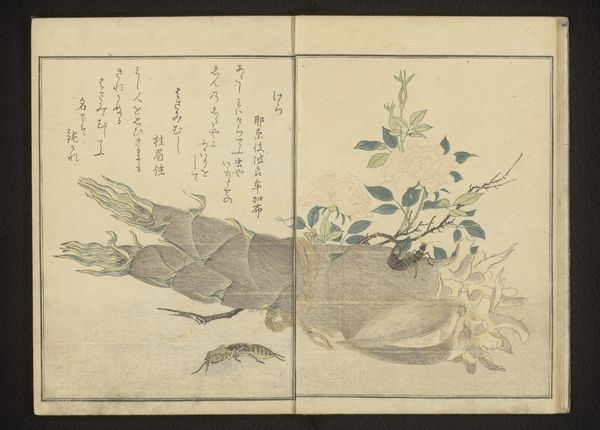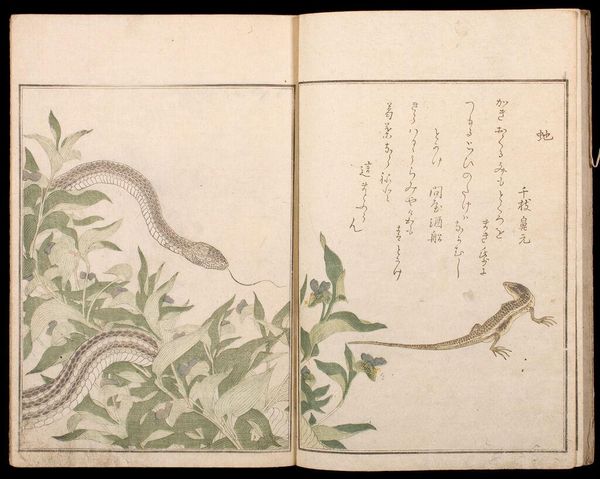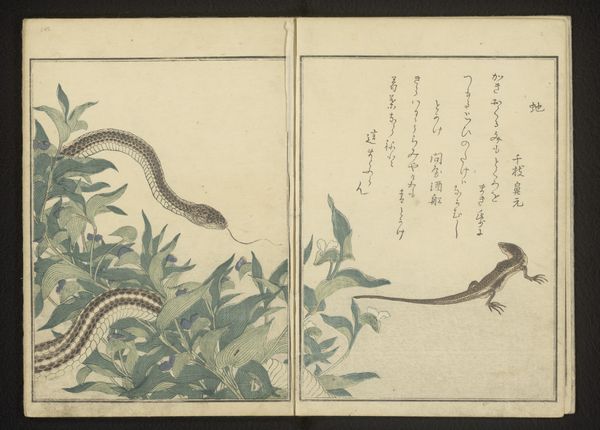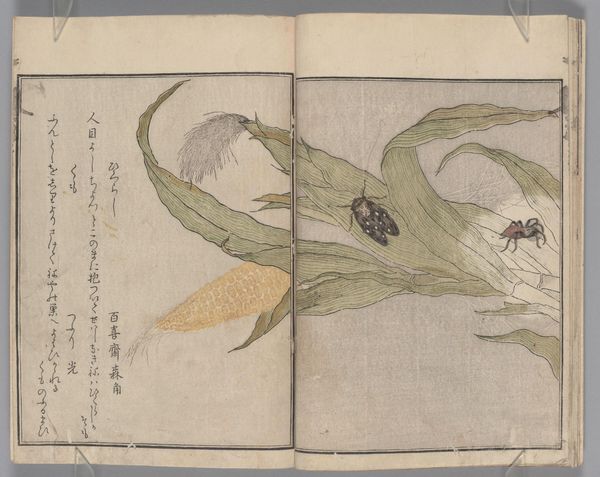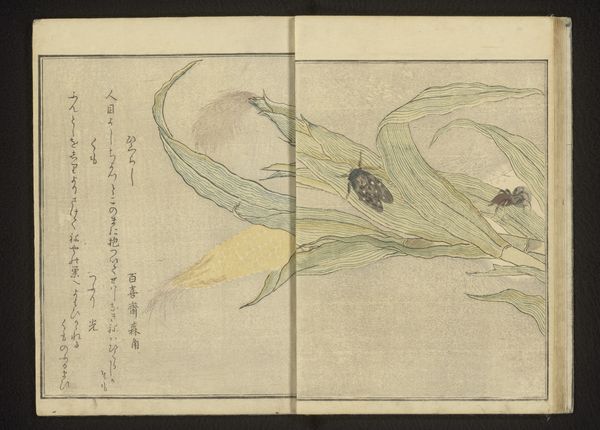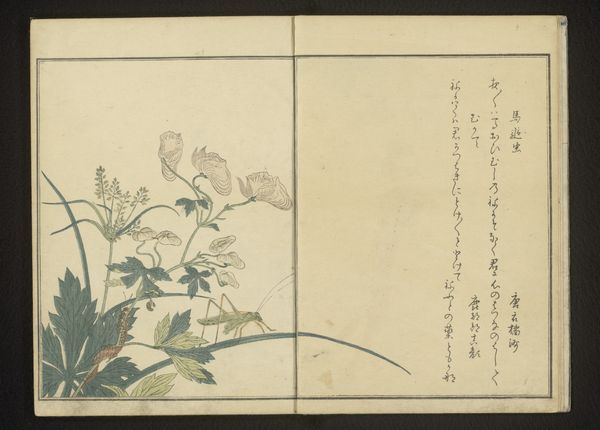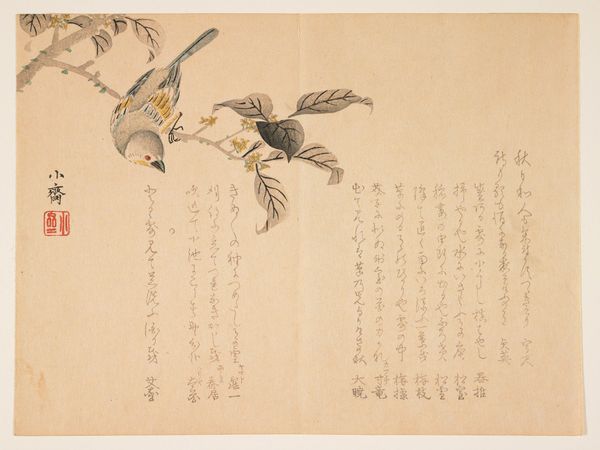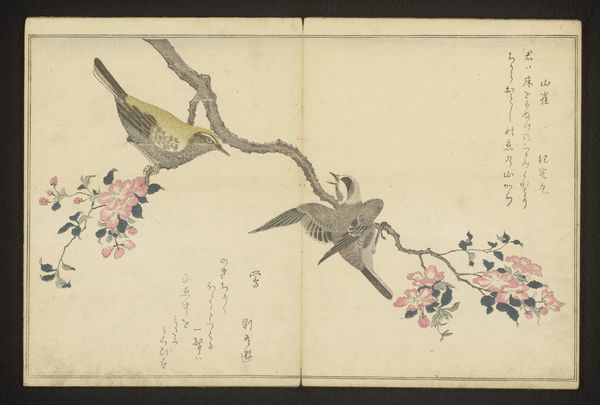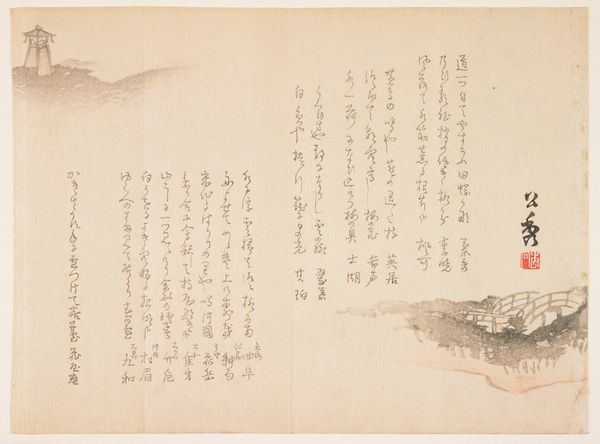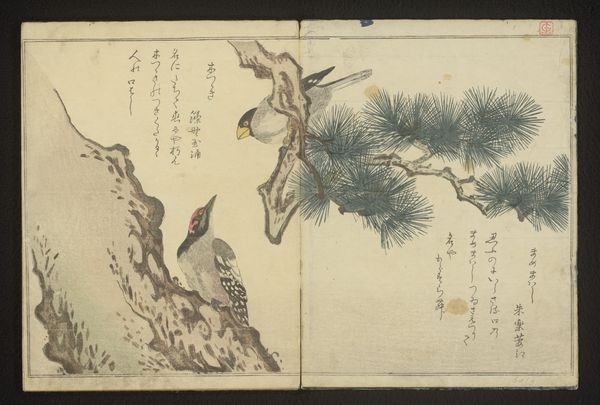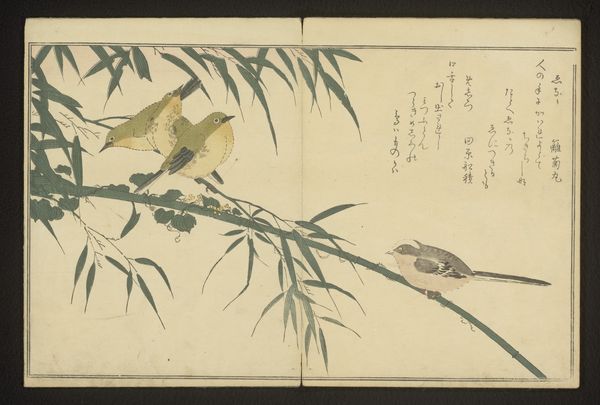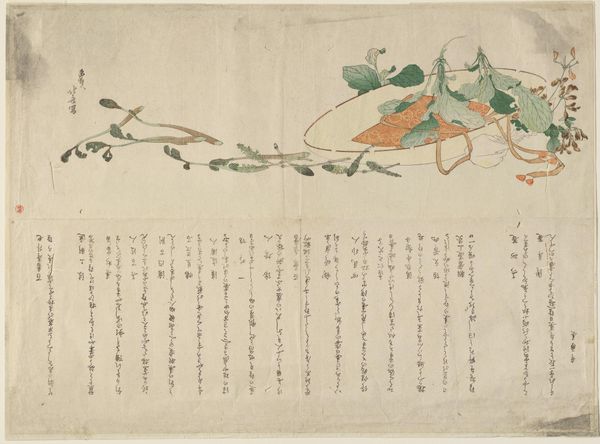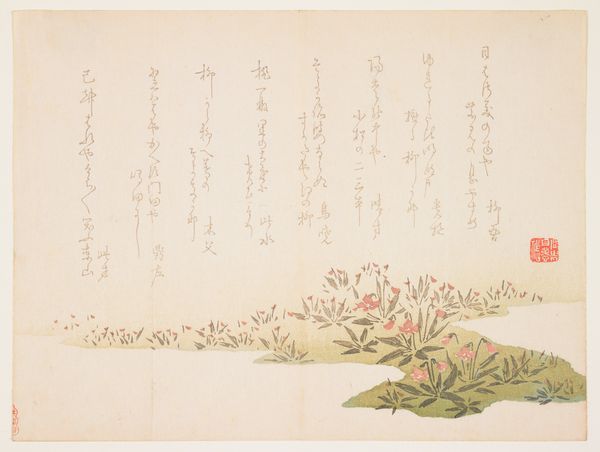
print, ink, woodblock-print
#
animal
# print
#
asian-art
#
landscape
#
ukiyo-e
#
figuration
#
ink
#
woodblock-print
Dimensions: 8 1/2 x 12 1/2 in. (21.6 x 31.7 cm) (image)10 1/2 x 12 13/16 in. (26.7 x 32.5 cm) (sheet)15 × 19 × 1 1/2 in. (38.1 × 48.26 × 3.81 cm) (outer frame)
Copyright: Public Domain
Editor: This is Kitagawa Utamaro's "Skink and Rat Snake," made around 1788. It's a beautiful woodblock print in the ukiyo-e style. The colours are quite subtle, and the composition feels very balanced. What social and historical contexts do you see at play here? Curator: This work operates on several symbolic levels. Firstly, consider the natural world in Edo period Japan. Representing animals wasn't just about capturing their likeness. Think about social hierarchies: How might these animals have been perceived within those structures, or even subverting them? Editor: So, you're suggesting the animals might be metaphors for social roles? I hadn't considered that. The snake does have a sort of powerful presence, and the skink seems almost vulnerable by comparison. Curator: Precisely! Now, let's think about gender. Ukiyo-e prints were often consumed by a male audience, but were sometimes created by women. The gaze and depiction of power are thus key questions. Do the animals embody certain gendered traits that are relevant in Utamaro’s context? How are notions of vulnerability and strength displayed? Editor: It's interesting that you bring up gender because I do see the snake in the print as having more phallic symbolism than the lizard. Curator: And beyond obvious visual readings, consider the act of observation. Are we invited to simply observe, or is Utamaro inviting us to interrogate the relationship between power, nature, and society itself? Editor: I think looking at it through this intersectional lens has completely shifted my perspective. I’m seeing power dynamics that I hadn't even considered initially. Curator: Exactly. These prints aren’t just pretty pictures, they’re loaded with commentary! Hopefully, this exploration offers a richer and more socially engaged reading of Utamaro’s work. Editor: Definitely, it makes you realise there's always more to unpack. I’ll be sure to remember this approach.
Comments
No comments
Be the first to comment and join the conversation on the ultimate creative platform.
